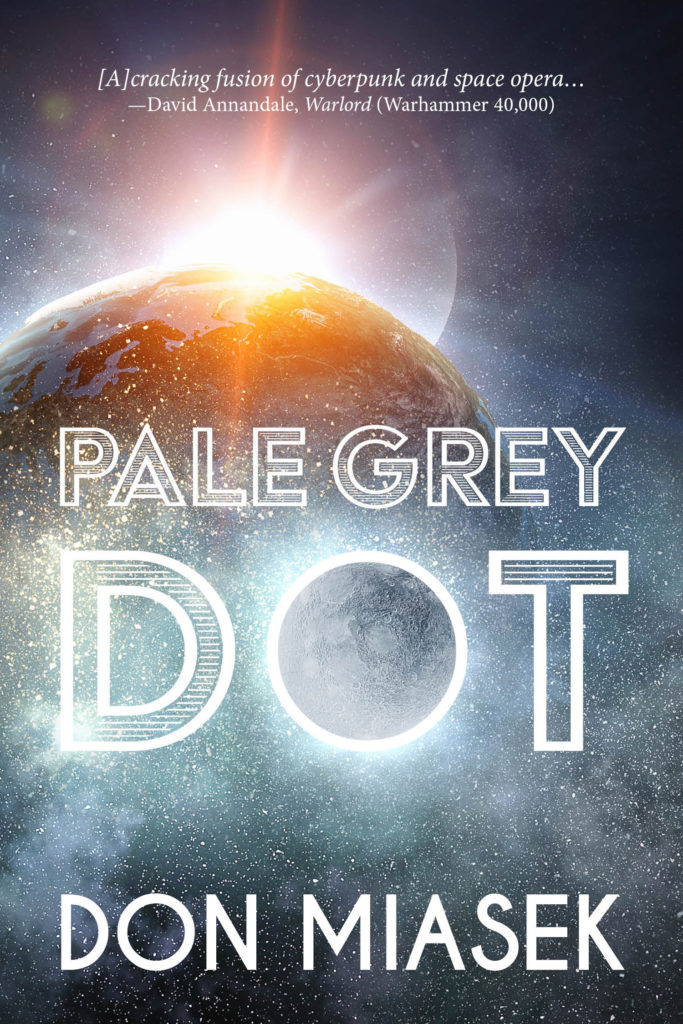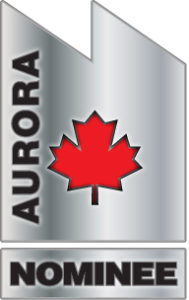
Today I’m lucky to have Peter G. Reynolds, author of the Aurora shortlisted story Broken Vow: The Adventures of Flick Gibson, Intergalactic Videographer, published in Issue #120 of On Spec.
Don: Could you tell us a little about yourself and how you got into writing?
Peter: I’m a video and podcast producer by day, working primarily with non-profit groups. I started writing when my son was born, which evolved into my first picture book, Lost Hallway: Where do Lost Things Go. I also began a children’s podcast, Musings and Other Nonsense, where I share my poems, stories and songs. About 5 years ago I began writing more seriously and for an older audience. This includes a YA chapter book, Stitches in Time Travel, and a variety of science fiction and fantasy short stories. I’m currently working on a YA Werewolf trilogy.
What inspired you to come up with Flick Gibson, Intergalactic Videographer?
They say “write what you know”. Well, as a videographer for over 20 years, that is something I know well. I’ve often wondered what the profession would look like in the distant future, and Flick helps me explore how different that might be, but also how some things never change.
Your latest Flick Gibson story has been shortlisted for an Aurora Award, Canada’s top literary prize in science fiction and fantasy. What was it like getting the news?
A little overwhelming if I’m being honest. Many of my Canadian literary heroes, including William Gibson, Spider Robinson, and Robert J. Sawyer have been winners. To be in that company alone, win or lose, is a huge honour.
Given your history in video production, is there a little Peter in Flick?
I like to think there’s a little Flick in me.
To be sure, you’ve never had to shoot a wedding during the outbreak of a civil war like Flick has… right?
No. Like Flick says, I don’t shoot weddings. Brides are scarier than any intergalactic civil war 🙂
Flick is more than just one story, of course. How’d you manage to turn a one-shot story into a series with On Spec?
It wasn’t planned. I write Flick Gibson stories as a kind of a pallet cleanser from my other writing. I know him well and the stories are really fun to write. Luckily the editors at On Spec have enjoyed the first three.
And one more piece of advice – submit your work in the correct format! I accidentally submitted my first Flick Gibson story as a PDF file (when the editor clearly requested Word only). It would have been rejected immediately had the first few lines not made the editor laugh, but I never want to take that chance again.
Should we expect more of Flick in the future?
For sure. Though I have no definitive plan. In a perfect world I’d write enough short stories to create an anthology of his adventures. Then who knows? Maybe a stand alone novel if a (wink) publisher was interested. I also wouldn’t say no to a television series starring Nathan Fillion.
Are Tripod (his quasi-loyal soundman) or the Noolian newlyweds likely to return?
Tripod for sure. They have a weird hate/hate relationship, but are still friends. It doesn’t make sense but I can tell you from personal experience the world of video production builds strong bonds that often can’t be explained.
In addition to Flick, you’ve also written two children’s books: Lost Hallway and Stitches in Time. How do you separate your work in children’s books with your more adult stories?
That’s a good question. I don’t think I consciously say “I’m going to write for children or adults”, I just write stories that I’d want to read. One of the greatest compliments I receive is when parents thank me for writing something they don’t mind reading to their 5-year old a hundred times. Sometimes they rhyme, sometimes they have more serious themes, but I think all my stories have something for everyone.
Has it been rewarding writing stories for children?
Absolutely. I started writing for my son and it’s been wonderful. You also know immediately if your stories are any good because children are honest. Brutally, brutally honest (sniff).
Any nice (or mean!) bits of feedback you’d like to share?
Feedback for Flick has been nothing but positive. I think it resonates with readers because it doesn’t take itself too seriously. A lot of science fiction today is serious, dystopian or has a deep message. Flick is about as deep as a half filled shot glass.
What was it like working with an illustrator?
With children’s books, your illustrator is really an equal partner in the process. Finding someone who can literally reach inside your head is a rare thing–and I’ve been lucky enough to find two of them. Shout out to Sam Agro and Michelle Simpson, incredibly talented artists who are also very patient. Something critically important in the collaboration process.
How do you find the writing scene in Toronto?
I can honestly say I wouldn’t be where I am without the Toronto Science Fiction and Fantasy Writers’ Group. Their talent and support has not only made me a better writer, but provided the accountability (or dare I say, kick in the ass) I need to keep my fingers on the keyboard.
Any suggestions for up-and-coming writers, either in the children’s literature or sci-fi world?
Regardless of the genre you write in, momentum is the key. It’s so easy to get distracted with “getting it right the first time”. But that’s when nothing get’s done. When you stress for weeks, months, years on a plot point, character arc or perfect rhyme. The best advice I was given was “The first draft of your story is going to suck”. Once you accept that, you can get on with finishing the first draft. The real magic happens in the editing.
Thanks for taking the time to share with us, Peter!



